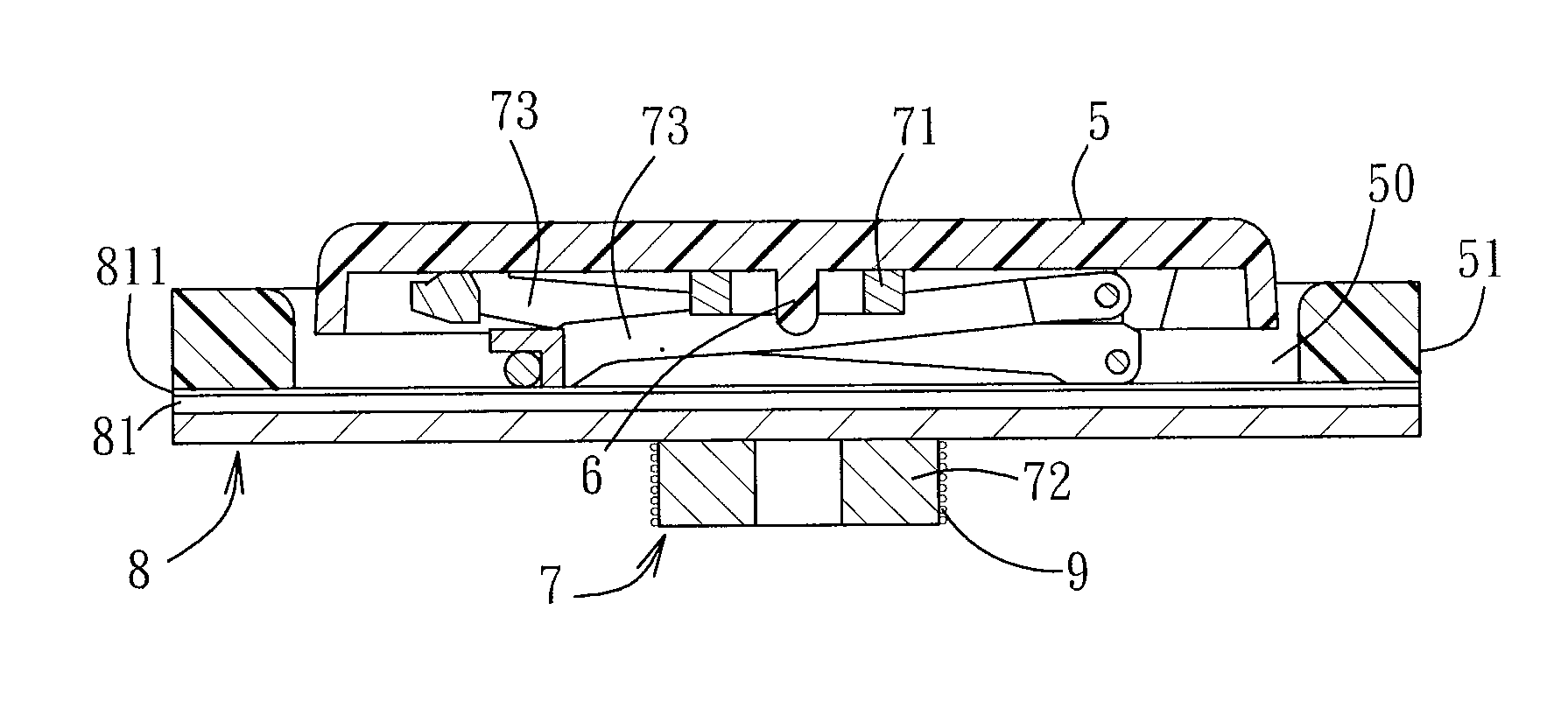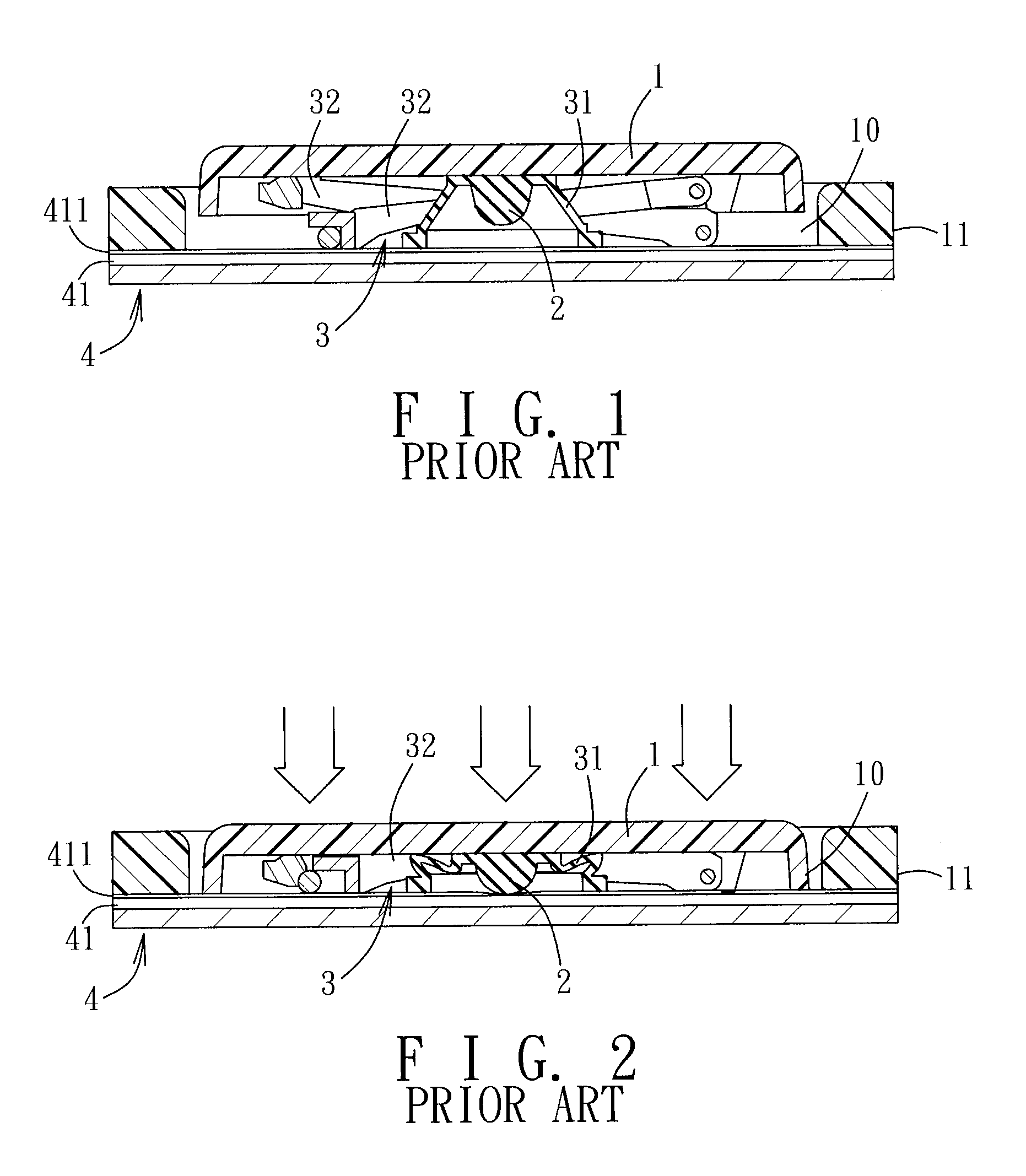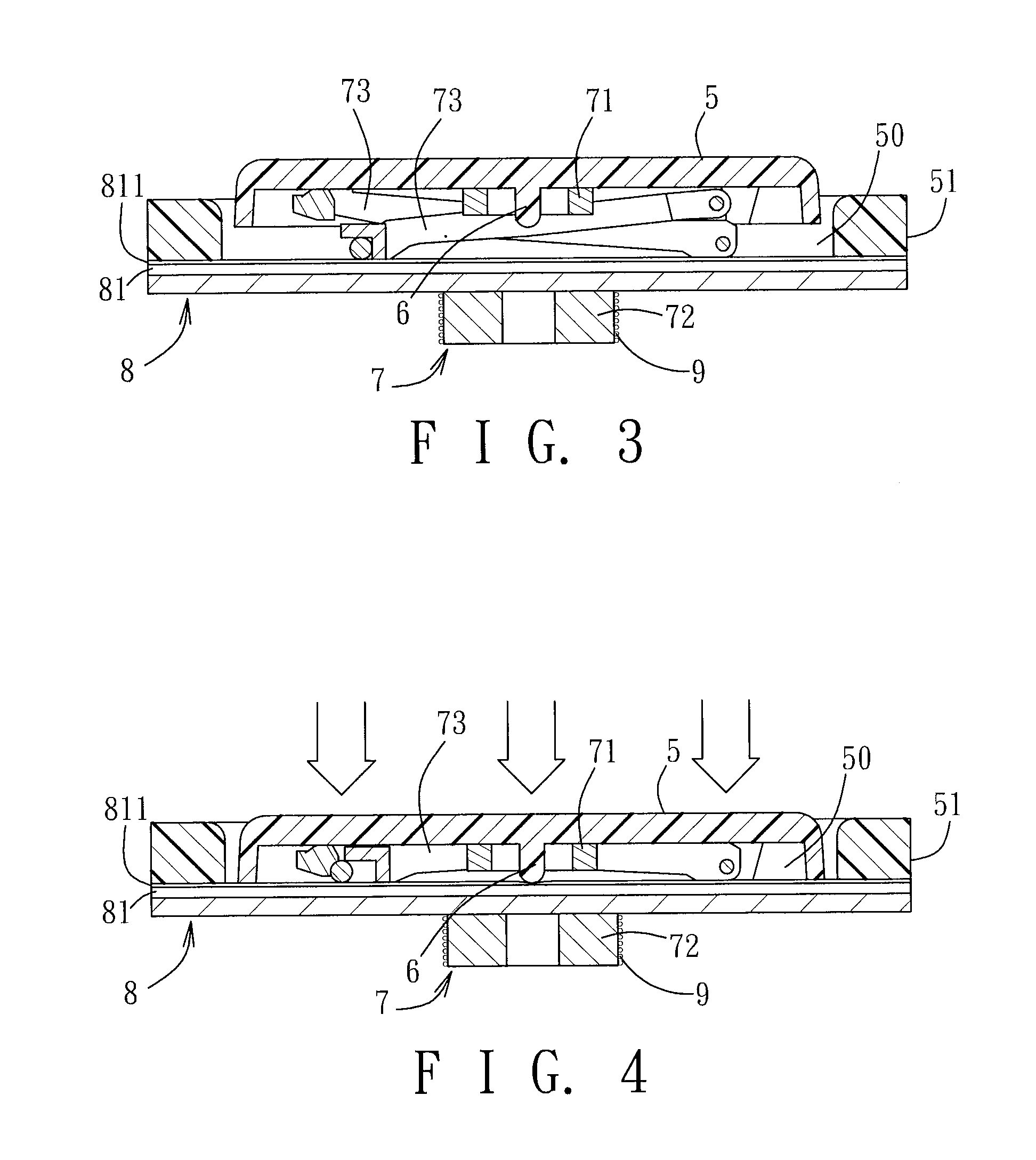Press key
- Summary
- Abstract
- Description
- Claims
- Application Information
AI Technical Summary
Benefits of technology
Problems solved by technology
Method used
Image
Examples
Embodiment Construction
[0020]Before the present invention is described in greater detail with reference to the accompanying preferred embodiments, it should be noted herein that like elements are denoted by the same reference numerals throughout the disclosure.
[0021]Referring to FIGS. 3 and 4, the first preferred embodiment of a press key according to this invention includes a keycap 5, a bordering member 51, a contact 6, a magnetic restoring device 7 and a base unit 8, and is adapted to be used in a computer keyboard or a telephone keyboard. The base unit 8 includes a substrate 81 and a circuit module 811 that is formed on the substrate 81 and that is capable of generating an electrical signal.
[0022]The bordering member 51 extends upwardly from the base unit 8. The keycap 5 is movable with respect to the base unit 8. In this embodiment, the keycap 5 is movably connected to the base unit 8. For convenient and stable pressing operation, the keycap 5 is preferably cap-shaped and extends outwardly from the b...
PUM
 Login to View More
Login to View More Abstract
Description
Claims
Application Information
 Login to View More
Login to View More - R&D
- Intellectual Property
- Life Sciences
- Materials
- Tech Scout
- Unparalleled Data Quality
- Higher Quality Content
- 60% Fewer Hallucinations
Browse by: Latest US Patents, China's latest patents, Technical Efficacy Thesaurus, Application Domain, Technology Topic, Popular Technical Reports.
© 2025 PatSnap. All rights reserved.Legal|Privacy policy|Modern Slavery Act Transparency Statement|Sitemap|About US| Contact US: help@patsnap.com



